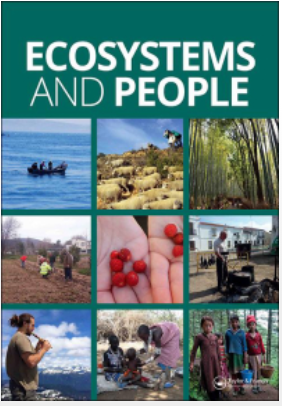尼泊尔西北部红熊猫栖息地获得的生态系统商品和服务的趋势
IF 3.7
Q1 Agricultural and Biological Sciences
引用次数: 1
摘要
尼泊尔濒临灭绝的小熊猫栖息地为周围的人类社区提供了生态系统产品和服务。在这里,为了帮助减轻熊猫的压力,我们量化了尼泊尔西部一个保护区及其周围最重要的生态系统产品和服务的当前使用情况,过去20年的趋势,以及推动这些趋势的因素。研究结果表明,除了动物饲料和床上用品、娱乐活动和生态旅游外,保护区外的生态系统产品和服务的采购量高于保护区内。保护区内的收入高于保护区外。在调查的七种主要服务中(i)药用植物的使用有所增加,但其可得性有所下降;(ii)竹子的利用保持稳定,但可利用资源较少;(iii)在木柴的使用或供应方面没有明显的趋势;(4)高原放牧减少,但可利用性下降;(v)园内收集的动物饲料和垫料数量少于室外,但可用性不变;(六)公园内宗教圣地的使用减少,但公园外没有减少;休闲旅游的情况正好相反。生态系统服务提供变化的直接驱动因素包括天气模式的变化和货物市场的波动;间接驱动因素包括机构治理和监管、人口增长、识字率、贫困和基础设施发展。确保可持续利用熊猫栖息地生态系统产品和服务的政策可以改善当地生计,减少自然资源退化,并有助于保护熊猫。本文章由计算机程序翻译,如有差异,请以英文原文为准。
Trends in ecosystem goods and services obtained from red panda habitats in north-western Nepal
ABSTRACT The habitats of Nepal’s endangered red pandas provide ecosystem goods and services to surrounding human communities. Here, to help reduce pressure on the panda, we quantified the current use of the most important ecosystem goods and services obtained in and around a protected area in western Nepal, trends over the last 20 years, and factors driving those trends. Our results show that more ecosystem goods and services were sourced by communities living outside the protected area than inside except for fodder and bedding for animals, recreational activities and ecotourism. Incomes inside the protected area were higher than outside. Of the seven main services investigated (i) use of medicinal plants had increased but their availability had declined; (ii) bamboo use remained steady but less was available; (iii) there were no perceived trends in firewood use or availability; (iv) there was less transhumant pastoralism to upland pastures but pasture availability had declined; (v) less fodder and bedding for animals was collected inside the park than outside, but the availability was unchanged; (vi) use of sacred religious sites had declined inside but not outside the park; (vii) the reverse was true for recreational tourism. Direct drivers of change in ecosystem service provision included changes in weather patterns and fluctuations in the market for goods; indirect drivers were institutional governance and regulation, population growth, literacy, poverty, and infrastructure development. Policies that ensure sustainable use of ecosystem goods and services from panda habitats could improve local livelihoods, reduce natural resource degradation and help conserve the panda.
求助全文
通过发布文献求助,成功后即可免费获取论文全文。
去求助
来源期刊

Ecosystems and People
Agricultural and Biological Sciences-Ecology, Evolution, Behavior and Systematics
CiteScore
7.80
自引率
11.30%
发文量
40
审稿时长
42 weeks
期刊介绍:
Ecosystems and People is an interdisciplinary journal that addresses how biodiversity and ecosystems underpin human quality of life, and how societal activities and preferences drive changes in ecosystems. Research published in Ecosystems and People addresses human-nature relationships and social-ecological systems in a broad sense. This embraces research on biodiversity, ecosystem services, their contributions to quality of life, implications for equity and justice, and the diverse and rich ways in which people relate to nature.
 求助内容:
求助内容: 应助结果提醒方式:
应助结果提醒方式:


